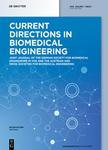版权所有:内蒙古大学图书馆 技术提供:维普资讯• 智图
内蒙古自治区呼和浩特市赛罕区大学西街235号 邮编: 010021

作者机构:Institute for ImplantTechnology and Biomaterials E.V. Friedrich-Barnewitz-Str. 4 Rostock-Warnemünde 18119 Germany Institute for Implant Technology and Biomaterials E.V. Rostock-Warnemünde 18119 Germany Institute for Biomedical Engineering Rostock University Medical Center Rostock-Warnemünde 18119 Germany Department of Obstetrics and Gynecology University Medicine Greifswald Greifswald 17475 Germany Institute of Quantum Optics Leibniz University Hannover Hannover 30167 Germany Department of Anatomy Rostock University Medical Center Rostock 18057 Germany
出 版 物:《Current Directions in Biomedical Engineering》
年 卷 期:2020年第6卷第3期
核心收录:
主 题:Scanning electron microscopy
摘 要:Obstructions of the Fallopian tube represent one of the most common reasons for an unfulfilled desire to have children. Microstent technology opens up new therapeutic possibilities to restore the natural lumen of the Fallopian tube within a single treatment. Within the current work we developed a self-expandable biodegradable microstent for gynecological applications. Based on a novel microstent design, prototypes were manufactured from poly-L-lactide tubing by means of fs-laser cutting. Microstent prototypes were characterized morphologically by means of scanning electron microscopy and biaxial laser scanning. As manufactured, a microstents outside diameter of about 2.3 mm and a strut thickness/width of about 114 μm/103 μm was measured. Mechanical characterization of microstents included bending as well as crimping and release behavior. After crimping to a minimum diameter of 0.8 mm and consecutive release, a microstent recovery to a diameter of 1.8 mm was found. Therefore, proof-of-concept for the self-expandable microstent could be successfully provided. © 2020 by Walter de Gruyter Berlin/Boston 2020.